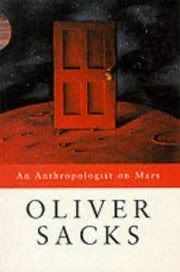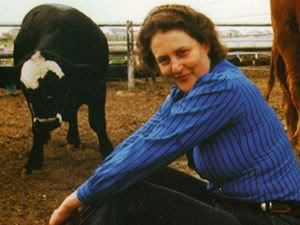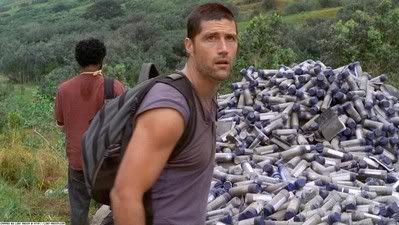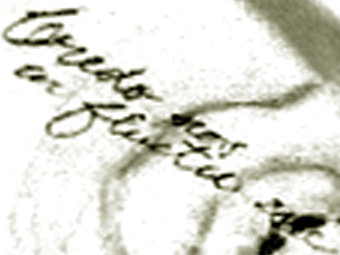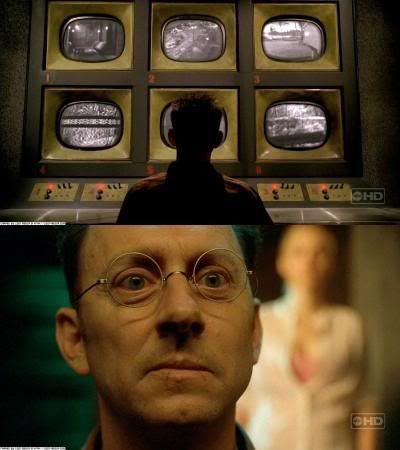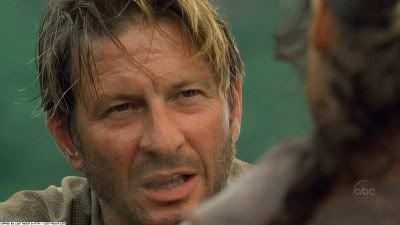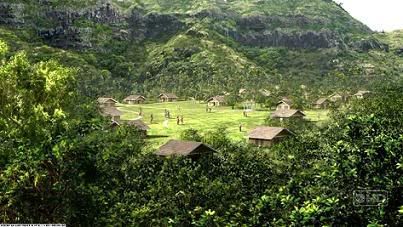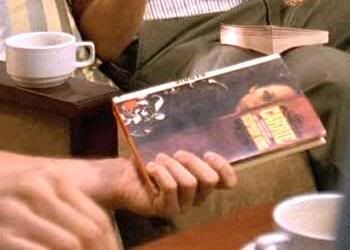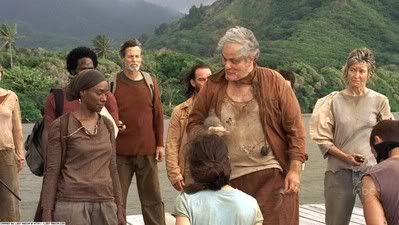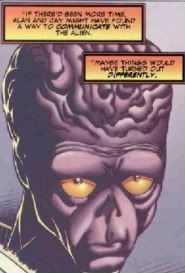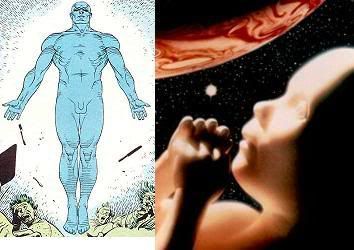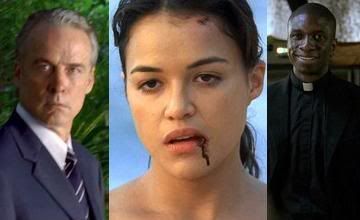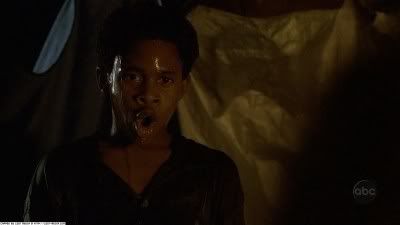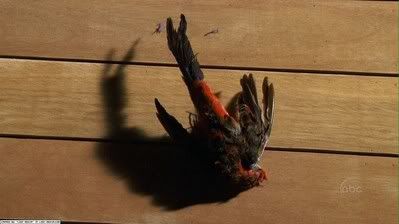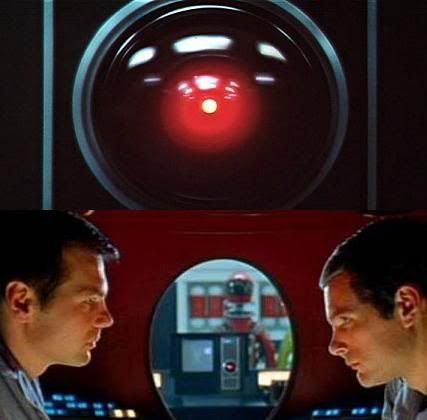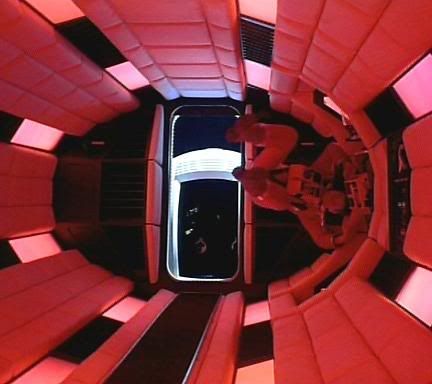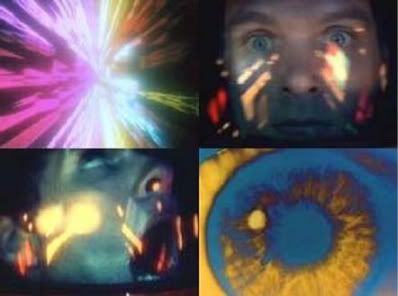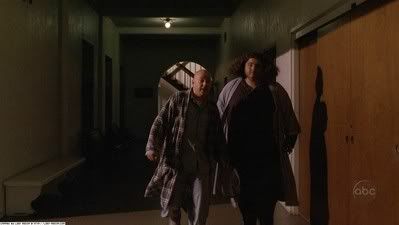PART I: THE MYSTERIOUS MAGNUS HANSOOne of the most intriguing yet least-analyzed mysteries of Lost is the identity of Magnus Hanso. The Blast Door Map suggests that his body rests near the Black Rock, which disappeared near the end of the 19th century with Hanso at the helm. Beyond that, however, the man remains a riddle, leading many to discount his relevance to current Island events.
I think this is a mistake. At the very least, Magnus is the Milo Rambaldi of our tale of the Black Rock. As such, it makes sense to speculate a bit about his background and possible connection to what's happening. For starters, I believe that Magnus Hanso was a powerful psychic, alchemist, and matrilineal descendant of none other than Albertus Magnus.
Magnus and the DeGroots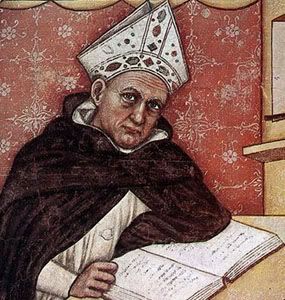
To review, Albertus was a brilliant religious scholar who lived during the thirteenth century and was a major influence on Thomas Aquinas. The name "Magnus" wasn't an honorific but rather a literal translation of his family name, DeGroot (thanks,
cinamin). Albertus was also reputed to have been an accomplished alchemist and powerful psychic.
Suposedly, Albertus succeeded in creating the philosopher's stone, which he used to construct an automaton with a soul (Smokey?). Albertus also wrote of a mysterious island located in the "western ocean" (thanks,
jmberger) and described a magical black rock that could only be mined from the head of a freshly slain dragon (erupting volcano?).
My guess is that Magnus, who may have been illegitimate, was so named to indicate his kinship with the DeGroots. He used his powers to become a successful sea and businessman, not to mention slaver. His participation in the slave trade long after it became stigmatized as the "peculiar institution" is telling -- Magnus embraced kidnapping and forced labor.
It wouldn't surprise me to learn he was a fan of Mr. Herbert Spencer's Social Statics and the Rev. Thomas Malthus's Essay on the Principles of Population, both of which advocated draconian measures to deal with the problems of poverty and overpopulation. I also expect that Magnus was obsessed with the Book of Revelation's description of the apocalypse.
The Island's Significance and LocationLike many navigators of his day, Hanso undoubtedly dreamed of finding safer and swifter passage between the Atlantic and Pacific oceans. Without airplanes or the Panama Canal, traders faced long and perilous journeys around South America or Africa. Finding superior east-west passage was the key to more than just money -- it promised to make the Magnus a legend.
I believe that Hanso found such passage by tracking the mysterious island described by his psychic ancestor Albertus. That Island, whether by freak of nature or ancient science, is accessible on both sides of the planet. In pseudo-scientific terms, it's situated on a wrinkle in timespace or vile vortex connecting the South Pacific with the South Atlantic.
Crazy as it seems, this is the most plausible explanation I can think of that accounts for anomalies like the Nigerian drug plane's presence and the daylight discrepancy of Flight 815 that others have previously noted. There may be other entrances (e.g. at the north and south poles) but these are the primary two. The South Pacific portal is at 4.815, 162.342.

The
antipode of that location (i.e., -4.815, -17.658) happens to be located in the South Atlantic along a possible flight path from Nigeria to South America, where the drug plane may have been headed with the heroin. It's a stretch (a Beechcraft 18 can't make the trip from Nigeria to South America without refueling) but it makes more sense than the South Pacific.
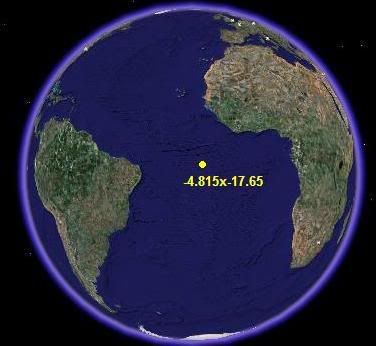 Tales of the Black Rock
Tales of the Black RockHow did Hanso end up on the Island? He presumably set out on his fateful trip with plans to establish a settlement and explore for mineral resources. As the experiences of Danielle and Desmond attest, however, the surrounding seas tend to be stormy due to the Island's electromagnetic fluctuations, which may also wreak havoc on navigational instruments.
A particularly fierce tempest deposited the Black Rock inland. Magnus survived the wild ride but the skeletons in the hold suggest his crew did not. His story thus loosely resembles that of another sole survivor of a shipwreck in Tales of the Black Freighter, the fictitous horror comic that's read by a black child named Bernard throughout the graphic novel Watchmen.
Short story shorter, Tales of the Black Freighter tells of a sailor who washes ashore on a deserted island after ghost pirates wreck his ship. Convinced the pirates are headed to massacre his village, the sailor fashions a raft from the corpses of his crew. He races home but ends up mistakenly committing the very slaughter he strived so hard to prevent.
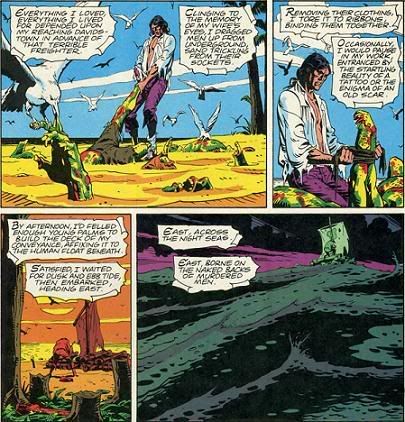
While not required, the full story (not to mention Watchmen) is a great read. You can access the story at
this site, though all Watchmen imagery has been removed (i.e., many panels are now empty but for text bubbles). Even so, it's a creepy tale well worth checking out, especially if you like pirates. Arrrrr!
Hanso's Haunted IslandLike his graphic novel counterpart (and for that matter Danielle) Magnus went mad from his marooning. At the same time, his psychic abilities blossomed as he learned to channel the Island's energies. Eventually, Hanso attained control over the Island, which literally became an extension of his powerful mind. In his madness, Magnus became convinced he was the demiurge.
The Island extended Hanso's life but his body eventually aged beyond any capability to sustain it. By then, however, his mind had literally imprinted itself on the Island, much like the earth's magnetic field leaves its mark on cooling volcanic rock. When Hanso's body withered away, a virtual copy of his consciousness remained, recorded like a natural EEG of his mind.
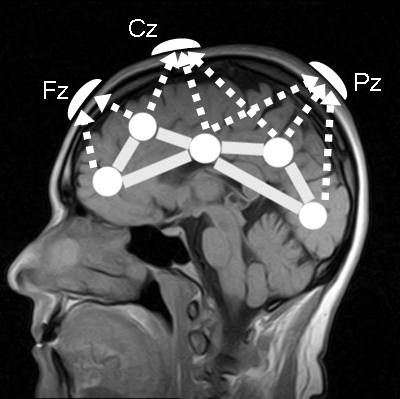
The analogy here is to hauntings, which some speculate are electromagnetic recordings that get replayed to -- and sometimes through -- living people sensitive enough to perceive them (thanks,
clayseason and
andylekker). This is the premise of Turn of the Screw, wherein the ghosts of two lovers replay their doomed affair through two receptive children.
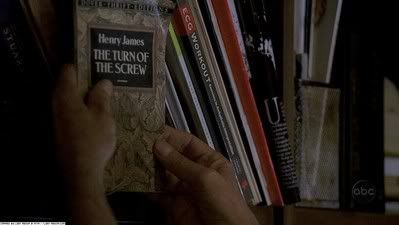 Channeling the Mind of Magnus
Channeling the Mind of MagnusI suspect, moreover, that the Island's exotic non-metallic minerals make it a kind of psychic transceiver. The radio tower and automated transmission, whatever their literal plot significance, are metaphors for this phenomenon. Just as the tower once transmitted the Numbers, the Island broadcasts a recording of the Mind of Magnus to receptive brains worldwide.
This brings me back to the Alias comparison. Certain characters on JJ's previous work were capable of channeling the consciousness of
Milo Rambaldi, a fictitious 15th century psychic and inventor who attained anachronistic knowledge of "automatism, life extension, protein engineering, mathematics, cryptography and cartography." Sound familiar?
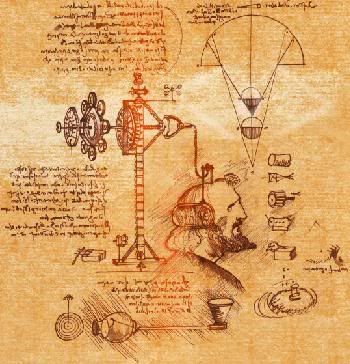
Rambaldi hid his most powerful inventions but left behind clues to their locations. One was an equation whose solution yielded the
coordinates of longitude and latitude where Rambaldi's consciousness was stored (the Sphere of Life). I doubt it's a coincidence that the core numerical factors of the Valenzetti Equation coincide with plausible coordinates for the Island.
My guess is that Valenzetti was himself channeling the Mind of Magnus when he formulated his famous Equation. Maybe Enzo was mentally ill (e.g., autistic or
schizophrenic) which seems to facilitate reception. Another possibility is some shared mutation that predisposed him genetically to pick up the Island's psychic signal. However it happened, he wasn't the only one.
Be sure to check out Part II wherein I relate the story of Adam and Eve, and reveal the true purpose of Dharma, and Part III where I discuss some possible (but by no means necessary) implications of this theory.
PART II: UNINTENDED CONSEQUENCESThe Story of Adam and EveThroughout the 1960s, a number of people across planet began receiving psychic transmissions from the Mind of Magnus. Among the first was "Adam," who may have been related to both Hanso and Albertus. Adam's connection to the Mind manifested initially as a preoccupation with neo-Malthusian theories like those described on my
Catastrophe thread.
As the connection strengthened, Adam was plagued by nightmares of the apocalypse and strange coincidences involving the Numbers. He and his wife "Eve" struggled to grasp what afflicted him. Eventually, their curiosity and concern, coupled with Adam's fear that the end of the world was imminent, drove the family to the South Pacific at the coordinates of the Numbers.
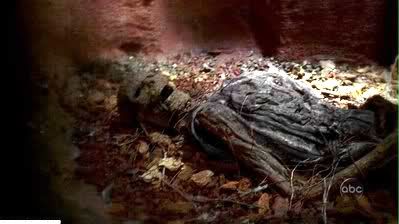
Thus did Adam and Eve arrive in Eden. Sadly, if they survived their trip, they were dead by the time Alvar Hanso found the Island himself several years later. The lone remaining survivor was Adam and Eve's child -- now a young teen -- who had lived his entire life on the Island and learned to harness its energies with his mind like Magnus before him.

The result was a cross between Charlie X and that creepy kid with powers on the Twilight Zone. Sensing the boy's potential, Hanso adopted him as a ward, but raised him on the Island to study its effects. Alvar also indoctrinated the boy in values of scientific curiosity and service to humanity. The analogy here is to another Alan Moore creation, Tom Strong:
Tom Strong, the title character, is a "science hero." He was raised in a high-gravity chamber and given an intensive education by his somewhat eccentric mad scientist father, on the fictional West Indian island of Attabar Teru. His upbringing, plus ingesting a root used by the natives of the island for health and long life, have made him nearly physically and mentally perfect. Though born at the dawn of the 20th century, he only appears to be in his forties as of the year 2000. (Full text here.)
The Birth of DharmaHanso's studies suggested that his ward's metamorphosis could be replicated in others through exposure to the Island. He planned a grand experiment in human evolution that would become the Dharma Initiative. But how to convince people to trade everything for life on a remote Island? And how to ensure that their newly developed powers would be used for the greater good?
Hanso's solution was to exploit Valenzetti's chilling mathematical prediction linking the Numbers with the apocalypse. Hanso knew very well that the reclusive mathematician had actually been channeling the Mind of Magnus. But Alvar shrewdly recognized that the myth of the Numbers was guaranteed to grab the attention of even the most selfish among us.
The victims of this noble lie were the original Dharma recruits. It's no coincidence their assigned tasks were pointless. Again, the Initiative's real goal was to spur subjects' psychic evolution through exposure to the Island. The Hatches merely provided a controlled environment for this process, a cocoon where the metamorphosis into moths could take place.
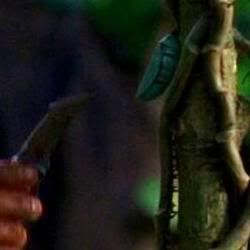
And it worked -- concerned scientists and test subjects flocked to Dharma in hopes of averting disaster. For a time, all was golden as participants toiled in ignorance at their stations. In his hubris, Hanso presumed he could keep his elaborate deception a secret. He failed to consider that (surprise, surprise) secrets are hard to keep from evolving psychics.
The test subjects discovered the truth and tattled to the scientists. Together, they staged a revolt, seizing control of Smokey and expelling Hanso from the Island. Afterwards, some returned to civilization, while Others remained behind to build a Baconian
New Atlantis. But demystification of the Numbers and the end of Dharma had a host of unforeseen consequences.
Karma PoliceFor one thing, former Dharma participants began to reproduce. The mutation caused by exposure to the Island's energies got passed down to their offspring. A new generation was born like Adam -- connected to the Mind of Magnus even though they'd never visited Island. Some of them had children of their own who proved even more adept at channeling the Mind.
Equally problematic, without the noble lie to constrain them, people were tempted to use their powers selfishly. I suspect that Locke's father, Cooper, was a former Dharma test subject. But even if his special talent for conning people was the result of natural mutation, his self-serving conduct underscores the dilemma created by demystification of the Numbers.

Free will and moral character are leitmotifs of Lost. The references to concepts like Tabula Rasa (the "blank slate") and Karma ("It'll come back around...") underscore that we are the authors of our souls, free to make the choices that define us as good or bad twins. The cost of that freedom, however, becomes prohibitive when bad people gain special powers.
That's why the Others' dual obsessions are "goodness" and children. Without the Numbers, moral character is all that stands against the rising tide of chaos. And like the Nigerian warlords who took Mr. Eko as a child, the Others realize that indoctrination works most effectively on the young. This was the factor that Hanso failed to consider in designing Dharma.
The Initiative's fatal flaw was that the adult test subjects had mostly defined their moral character by the time they joined Dharma, necessitating the noble lie. The catastrophic irony is that revelation of the deception started a chain reaction that now threatens to cause the very apocalypse the Initiative was supposedly commissioned to avert.
Sickness and QuarantineMeanwhile, the Mind of Magnus continues to draw people to the Island like moths to the Flame. Sometimes, they arrive alone like Kelvin or Desmond. Other times, they come en masse as in the case of the French scientists and Flight 815. Initially, the Others were unprepared for such arrivals -- Danielle's crew no doubt caught them completely off guard.
They seized the baby Alex believing she could be integrated into their utopian community. But they were divided over how to deal with the adults, who soon began to transform. Some felt the French should be given the chance to prove they were good people, while others were adamant that they should be terminated before the transformation was complete.
Believing her crew to be sick, Danielle killed them all, solving the immediate problem. But the Others were determined not to repeat the terrible experience. Suspicious that the Numbers broadcast had attracted the French scientists, the Others let Danielle change the radio transmission. They also established procedures for dealing with any future trespassers.
It was decided that new arrivals would be quarantined in Swan Station and duped into performing the duties of its original occupants. Swan represented one of the few controlled environments left on the Island, a place where occupants could be vaccinated against the Island's transformative effects and spied on via hidden camera to judge whether they were "good" people.
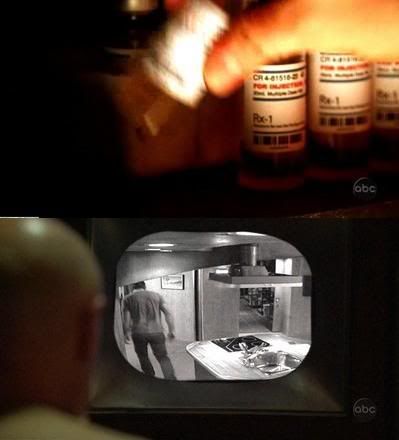
Besides, someone had to push the button, which still maintained the Island's electromagnetic cloak. Why entrust such a critical responsibility to outsiders? First, the task itself kept them occupied, providing a sense of purpose ("Just saving the world..."). Second, the 108-minute countdown kept them close to Swan, as far away from Otherville as possible.
System FailureThis system worked fine for solo arrivals. Occasionally, some unlucky Henry Gale would come knocking when Swan had no vacancies and be quietly killed. The crash of Flight 815, however, represented a new crisis. The majority of Others had no stomach for a massacre, and with dozens of survivors in at least two locations, quarantining them all in Swan Station was impossible.
So a new plan was formulated on the fly. Smokey led Jack to the Caves, where Adam and Eve had originally set up camp and later been laid to rest. The hope was that shelter and fresh water would curb the urge to explore the Island. But events like Ethan's unmasking, Locke's discovery of the Hatch, and Claire's escape from the Staff, quickly dashed that optimism.
Our Losties have advanced further and faster than expected. And the old debate over how to handle outsiders has exposed more basic conflicts lurking beneath Otherville's placid veneer. Though everyone pays lip service to free will and morality, some resort more readily to murder and manipulation in service of the perceived good, much to the dismay of others.
With casualties mounting, and revenge clouding hearts and minds, Otherville has increasingly become a house divided against itself...
PART III: RELATED SPECULATIONS*Ben is the child of Adam and Eve. A lifetime of channeling the Mind of Magnus has left its imprint on Ben, making him increasingly draconian. Like Magnus before him, Ben has developed a disturbing taste for manipulation, kidnapping, and forced labor. The tumor on his spine is thus a metaphor for larger the cancer on his soul.
*Juliet is a relatively recent arrival to the Island. Her vocation of fertility doctor suggests she was not a part of the original Dharma Initiative, which focused on adults. More likely, she crashed on the Island or was brought there subsequently to deal with a problem of sterility among some hybrid offspring of evolved and ordinary humans.
*Alcatraz or Ellis Island? Flight 815's arrival exposed the shortcomings of the Others' present quarantine system. In hopes of avoiding future problems, and as a means of alleviating the current crisis, the Others have begun constructing a new and larger quarantine facility on Alcatraz islet. That's what Kate and Sawyer were helping to build.
*Jacob is Patchy. Remember the guy with the eye patch whom we glimpsed in the Pearl monitors? That's Jacob, whose original mission was to observe occupants of Swan Station like Kelvin and Desmond to gauge their goodness. Now he's charged with making a list (and checking it twice) of the naughty and nice among our Losties -- i.e., Jacob's List.
*Smokey can channel the Mind of Magnus. The Others believe they control Smokey, and for the most part they do. But Smokey is a modern application of ancient alchemical knowledge, and likely composed of the same exotic medium that maintains the Magnus Hanso's consciousness. The system may thus have brought our Losties to the Island, much like Locke suspects.
